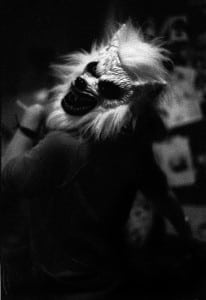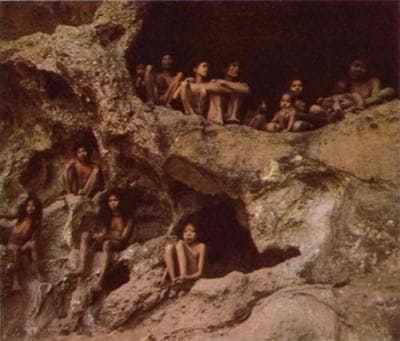9 Shocking Hoaxes That Drove Pinoys Crazy

Hoaxes, stripped of all its negative connotations, are just pure entertainment. And there’s no better way to spice up our boring office life than feasting on out-of-this-world stories, regardless if they’re fabricated or not.
From bizarre cryptids to forged historical records, the Philippines is a melting pot of colorful hoaxes. Here are some of the fake stories that challenged our wits and drove us nuts over the years:
9. The Black She-Wolf
In October 1719, Governor General Fernando Manuel de Bustillo Bustamante y Rueda was assassinated at the Palacio del Gobernador. The perpetrators were never identified although some accounts link Dominican priests to the murder. Then, sometime during WWII, a novel based on the gruesome murder came out of nowhere. Entitled “La Loba Negra” (The Black She-Wolf), it tells the story of the Governor General’s widow who transforms into a wolf by night to kill her husband’s murderers.
The said novel was allegedly written by Jose Burgos, who, as far as historical records are concerned, had no other known literary works. Historian William Henry Scott later discovered that “La Loba Negra” was only a hoax. Turns out, con man Jose E. Marco–the same guy behind the Code of Kalantiaw–created the novel as part of his immense collection of forgeries. [Image source: www.flickr.com]
8. ‘Acid Rain’ Text Scare
Radiation and acid rain can put anyone’s life at risk. So just imagine waking up one day with ‘acid rain’ threats clogging up your inbox. Sadly, that’s exactly what happened during the height of the radiation leak at Japan’s Fukushima nuclear power plant.
Government authorities came to the rescue, saying everything was under control. Experts also explained that because the wind current was heading north at that time, it was impossible for the radiation, let alone an acid rain, to reach the Philippines.
7. Pinay Cannibal
Move over Hannibal Lecter! This woman above–allegedly a Filipina–might be one of the worst man-eaters in existence. Rumor has it that upon reaching her 29th birthday, the unidentified cannibal had already eaten dozens of humans–including her husband. She would store the human meat in her refrigerator and later serve them to her friends or relatives. So extreme was her appetite for human flesh that she also chewed off a prison guard’s finger when she was jailed for murder.
However, with no substantial proof available, the story of this “Pinay cannibal” could either be a hoax or just plain exaggeration. Although some ancient Filipino tribes ate their own kind back then, cannibalism in the Philippines has been a dead tradition for centuries now.
6. The Giant Bat
On March 2012, a photo of a humongous bat (as seen above) took the Internet by storm. Initially, it was speculated to have come from Peru but additional investigations confirmed it to be of Philippine origin. However, Trish Wimberley, an Australian bat expert, said that it’s impossible for any species of bats to grow as big as what is shown in the photo. Either it was manipulated or taken in an angle that made the bat look larger than its actual size. [Image source: MSN New Zealand]
5. Mermaid Carcass of Visayas
In 2003, the childhood memories we had of mermaids were challenged by a series of viral images that are more scary than fascinating. Attached is an email message with a subject “Mermaid found in the Philippines”, these disturbing images of a dead mermaid spread like a wildfire, leaving scaredy cats screaming like crazy. The photos look authentic but later investigations proved it to be a hoax.
Fabrication of mermaid images is not a new idea anymore. Old fake mermaids were done by surgically joining dead monkeys (sometimes humans) and fish date as far back as 1,400 years old. Another classic example of a fabricated mermaid should be the Fiji mermaids popularized by showman P.T. Barnum in the mid-1800s. Surprisingly, the fake photos of the Visayan mermaid resurfaced once again in 2004 after allegedly being washed up by the Indian Ocean tsunami.
4. Facebook Ban
In November 2011, tons of spam alerts and pornographic videos from unknown sources began flooding Facebook walls. Soon, Mark Zuckerberg, CEO of the social media giant, officially released a statement. He threatened Filipinos that a nationwide Facebook ban would happen if the issue doesn’t stop. But as succeeding reports would reveal, this message was just another pointless hoax. The real perpetrators were later identified and Mark Zuckerberg was proven to have never made such statement publicly.
3. Snow in the Philippines
On July 24, 2013, a YouTube news clip showing a snowfall in Mindanao left many Pinoy netizens dumbfounded. A winter wonderland in the Philippines? Sounds great but seeing a snowfall here is like witnessing an apparition.
Fortunately, both PAGASA and NHK World Weather Report anchor Robert Speta said the video is fake. Turns out, the video clip was taken in 2009 during the Mayon volcano eruption. In other words, it is an ash fall, not snowfall. Rodsburgh News Live, the agency which allegedly covered the report, doesn’t exist either.
2. Code of Kalantiaw
In 1433, the first Filipino lawmaker purportedly wrote Code of Kalantiaw on the island of Panay. Thanks to this document, we were introduced to some of the most absurd and bizarre laws ever written. These include brutal punishments for minor offenses ranging from stoning and cutting off fingers to drowning and feeding to crocodiles.
Code of Kalantiaw had been an important part of history until its authenticity was finally put into a question. No historical evidence–not even a trace of oral history in Aklan–has ever been found to prove its existence. Finally, historian William Henry Scott was able to identify the person behind the falsehood: Jose E. Marco. The Code of Kalantiaw, as it turned out, was a fabricated myth submitted by Marco to the Philippine Library in 1914. In the end, the National Historical Institute officially declared it a hoax in 2004.
1. The Lost Tribe of Tasaday
In 1971, wealthy Filipino official Manuel Elizalde discovered a Stone Age tribe living in isolation somewhere in Cotabato. They wore leaves, spoke their own dialect, and used crude tools like stone axes. Soon, the newly found “Tasaday” tribe became a worldwide sensation, hitting the headlines of Reader’s Digest, National Geographic, and Associated Press.
Fast forward to 1986, Swiss journalist Oswald Iten visited the Tasaday tribe and got the shock of his life. He discovered that the lost tribe did not only wear T-shirts and jeans but also spoke modern local dialects. Turns out, the Tasadays–who were actually T’boli and Manobo farmers–were only forced to act like cavemen so Elizalde would give them gifts. Soon enough, the story of the Stone Age tribe was described as the “greatest hoax since Piltdown Man”.
References
Campos, P. (2012). Corporeal Histories: An Interview with Myra Beltran on Itim Asu: 1719-2011.Social Science Diliman, 8(2). Retrieved from http://goo.gl/rGBHaO
Christensen, B. (2011). Hoax – Mark Zuckerberg Blames Facebook Porn Attack on the Philippines.Hoax Slayer. Retrieved 30 June 2016, from http://goo.gl/cPvPJj
Emery, D. (2016). Pictures: Dead Mermaid Found in the Philippines. Urbanlegends.about.com. Retrieved 30 June 2016, from http://goo.gl/agV6vi
NTC admits helplessness vs prank, panic texts. (2011). GMA News Online. Retrieved 30 June 2016, from http://goo.gl/KHjxJ9
Ocampo, A. (2013). ‘Chewing testicles’. Inquirer.net. Retrieved 30 June 2016, from http://goo.gl/tqrahm
Pineda, D. (2016). My favorite Marcos lie: The Tasaday. philSTAR.com. Retrieved 30 June 2016, from http://goo.gl/yYDqHf
Snow in the Philippines? Fake, says expert. (2013). ABS-CBN News. Retrieved 30 June 2016, from http://goo.gl/4YsIL5
The New York Times,. (1988). The Gentle Tasaday Are Merely a Persistent Hoax. Retrieved from http://goo.gl/LS8y3k
FilipiKnow
FilipiKnow strives to ensure each article published on this website is as accurate and reliable as possible. We invite you, our reader, to take part in our mission to provide free, high-quality information for every Juan. If you think this article needs improvement, or if you have suggestions on how we can better achieve our goals, let us know by sending a message to admin at filipiknow dot net
Copyright Notice
All materials contained on this site are protected by the Republic of the Philippines copyright law and may not be reproduced, distributed, transmitted, displayed, published, or broadcast without the prior written permission of filipiknow.net or in the case of third party materials, the owner of that content. You may not alter or remove any trademark, copyright, or other notice from copies of the content. Be warned that we have already reported and helped terminate several websites and YouTube channels for blatantly stealing our content. If you wish to use filipiknow.net content for commercial purposes, such as for content syndication, etc., please contact us at legal(at)filipiknow(dot)net





